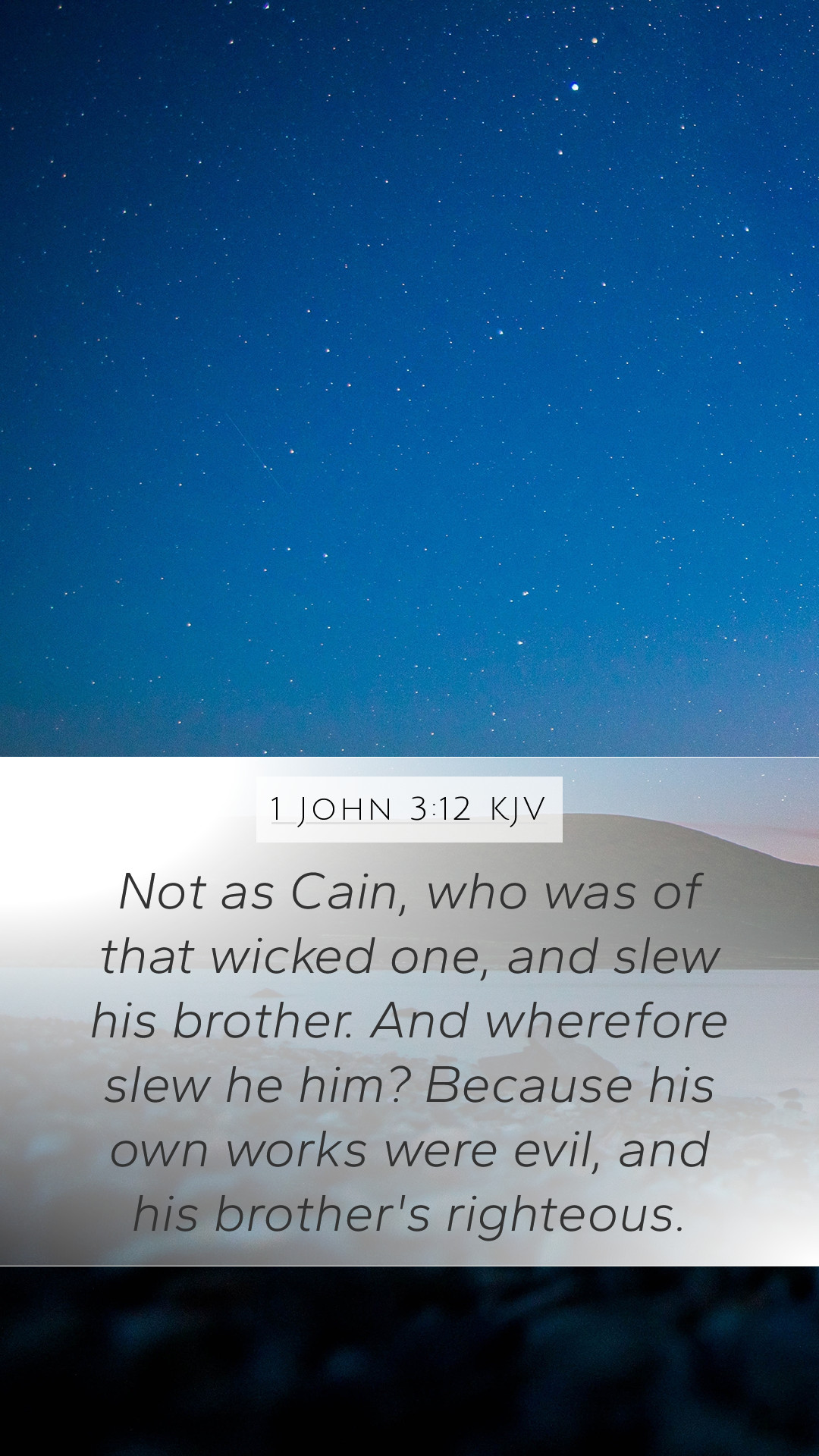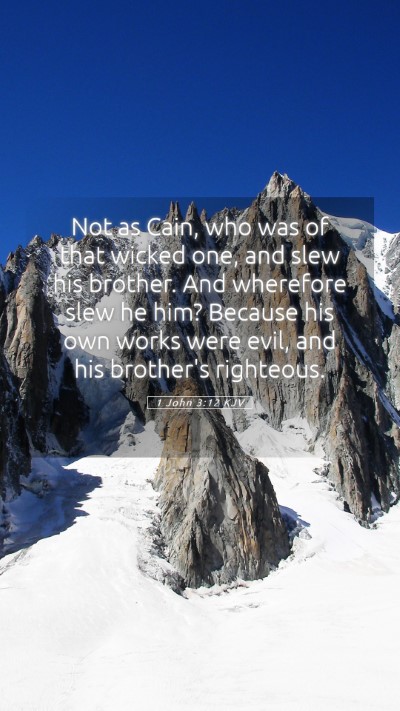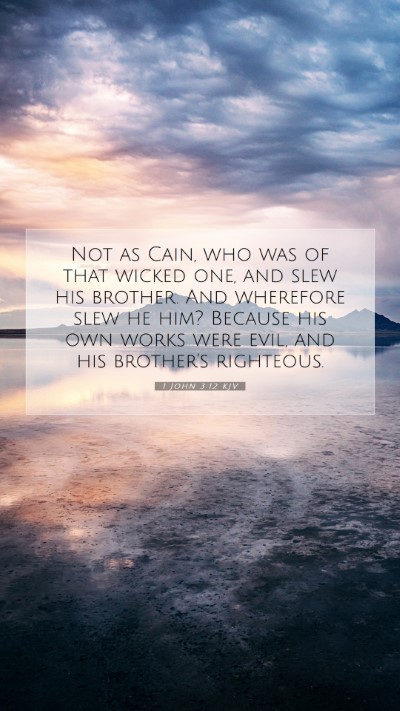Old Testament
Genesis Exodus Leviticus Numbers Deuteronomy Joshua Judges Ruth 1 Samuel 2 Samuel 1 Kings 2 Kings 1 Chronicles 2 Chronicles Ezra Nehemiah Esther Job Psalms Proverbs Ecclesiastes Song of Solomon Isaiah Jeremiah Lamentations Ezekiel Daniel Hosea Joel Amos Obadiah Jonah Micah Nahum Habakkuk Zephaniah Haggai Zechariah Malachi1 John 3:12 Meaning
What is the meaning of 1 John 3:12?
Not as Cain, who was of that wicked one, and slew his brother. And wherefore slew he him? Because his own works were evil, and his brother's righteous.
1 John 3:12 Bible Verse Meaning
Bible Verse Commentary on 1 John 3:12
Understanding 1 John 3:12
This verse states, "Not as Cain, who was of that wicked one, and slew his brother. And wherefore slew he him? Because his own works were evil, and his brother's righteous." This powerful statement by the Apostle John contrasts the behavior of Cain and Abel, underscoring the theme of murderous envy and the consequences of unrighteousness.
Bible Verse Meanings
The verse serves as a warning against the jealousy and hatred that can lead to destructive actions. Cain represents an archetype of sin, while Abel symbolizes righteousness. The stark difference between these two figures illuminates the ongoing battle between good and evil.
Bible Verse Interpretations
-
Matthew Henry's Commentary:
Henry points out that Cain’s actions were driven by his own wickedness and the rejection of God. He highlights the importance of self-examination, stressing that one's deeds can reflect the inner state of one's heart and motives.
-
Albert Barnes' Commentary:
Barnes elaborates on the idea of brotherly love, contrasting Cain's hatred with the love that Christians should aspire to. He suggests that John’s audience needs a clear understanding of righteousness and the dangers of allowing sinful nature to dictate relationships.
-
Adam Clarke's Commentary:
Clarke emphasizes that Cain was of "that wicked one," suggesting that Cain’s actions go beyond mere jealousy; they reflect a deep-seated alignment with evil. He interprets this scripture as a call to vigilance against the pernicious influences that can lead believers astray.
Scripture Analysis
1 John 3:12 invites readers to reflect upon the nature of their actions and the motivations behind them. It serves as a point of self-reflection, urging believers to emulate Abel's righteousness while recognizing the destructive nature of sin represented by Cain.
Key Themes:
- Righteousness vs. Wickedness: A central theme where John contrasts holy living against sinful behavior.
- The Nature of Sin: Depicted through Cain’s actions, showing that sin can lead to severe consequences.
- Brotherly Love: A crucial aspect of Christian conduct, where interpersonal relationships should be characterized by love, not hatred.
Application of 1 John 3:12
For personal application, believers are encouraged to reflect on their attitudes towards others and to engage in practices that foster love and goodwill. Understanding that one’s actions can have profound implications is vital in maintaining harmonious relationships within the church and society.
Additional Bible Cross References
- Genesis 4:8: The account of Cain's murder of Abel.
- 1 John 2:9-11: The contrast between light and darkness, love and hate.
- Matthew 5:21-22: Jesus’ teaching on anger and the consequences of hatred.
Conclusion
In summary, 1 John 3:12 warns against the dangers of hatred and emphasizes the importance of love and righteousness in the life of a believer. By engaging with Bible verse meanings, interpretations, and thorough biblical exegesis, individuals can deepen their understanding of Scripture and apply these insights to their lives actively. This verse, along with related commentaries, serves as a guide for both personal reflection and communal Christian living.


